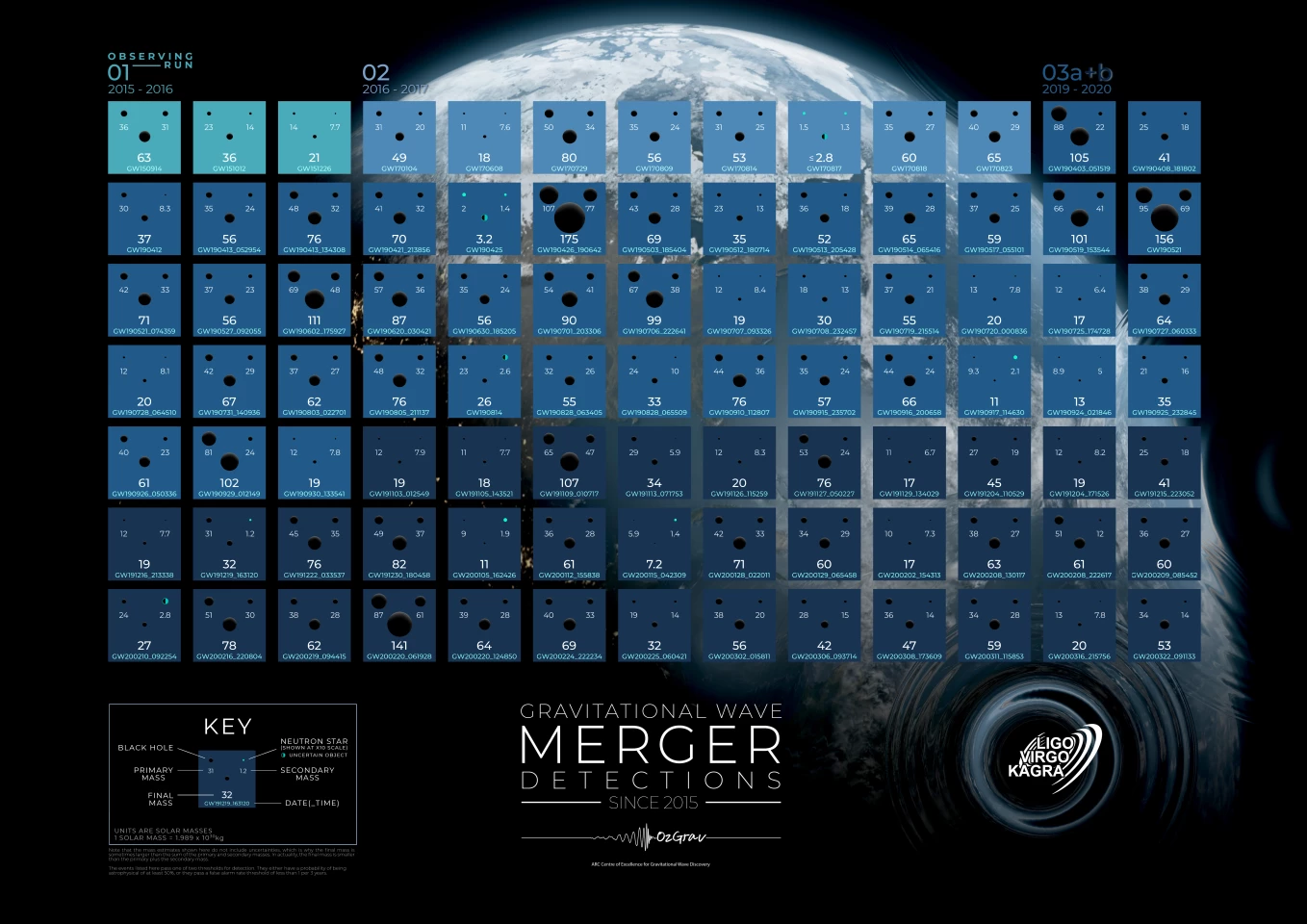Astronomers have reported a bumper crop of new gravitational wave detections. The 35 new signals, comprising the third Gravitational-Wave Transient Catalog (GWTC-3), help scientists probe the depths of the cosmos in more detail.
Gravitational waves are ripples in spacetime itself, created in cosmic cataclysms like black holes merging and neutron stars colliding. They were first predicted in the early 20th century, but weren’t directly detected until 2015, with dozens of signals recorded in the six years since.
And now with GWTC-3, the list has grown by 35, bringing the total number of detections to 90. These new events were detected by the LIGO, Virgo and KAGRA facilities during the second part of Observing Run 3 (O3b), which was conducted from November 2019 to March 2020 before being cut short by the COVID-19 pandemic.
The vast majority of the new detections came from merging pairs of black holes, but two events seem to have been produced from a black hole swallowing a neutron star. One other detection is particularly strange though – it involves a black hole colliding with a “mystery object” with a mass around 2.8 times that of the Sun. By current definitions, that’s too massive to be a neutron star, but too light to be a black hole.
The team says that the most likely explanation is a low-mass black hole. The upper mass limit for neutron stars seems to be fairly well-defined in physics, at around 2.1 solar masses. But the lower limit for black holes, set at about five solar masses, is mostly based on observations, so this new detection – as well as a similar signal in August 2019 – could show that we need to revise our understanding of how small black holes can be.
At the other end of the scale, the new observing run also revealed some absolute monsters. A signal called GW200220_061928 involved a collision between black holes with masses of 87 and 61 solar masses, resulting in a final black hole of 141 solar masses (the missing seven solar masses was converted to energy and carried away in the form of the gravitational waves.) That falls directly into the understudied intermediate class between stellar and supermassive black holes.

The astronomers were able to infer the spins of some of the black holes from their gravitational wave signals. In two cases, it seems that before their mergers, the black holes were spinning backwards in relation to their orbits around each other.
The researchers say that the treasure trove of new data could help astronomers unravel major mysteries of the cosmos.
"This really is a new era for gravitational wave detections and the growing population of discoveries is revealing so much information about the life and death of stars throughout the universe,” says Professor Susan Scott, an author of the study. “Looking at the masses and spins of the black holes in these binary systems indicates how these systems got together in the first place.
"It also raises some really fascinating questions. For example, did the system originally form with two stars that went through their life cycles together and eventually became black holes? Or were the two black holes thrust together in a very dense dynamical environment such as at the centre of a galaxy?”
Observing Run 4 is due to begin in late 2022. The research has been submitted for publication, and is currently available on the preprint server arXiv.
Sources: LIGO, OzGrav, Australia National University





